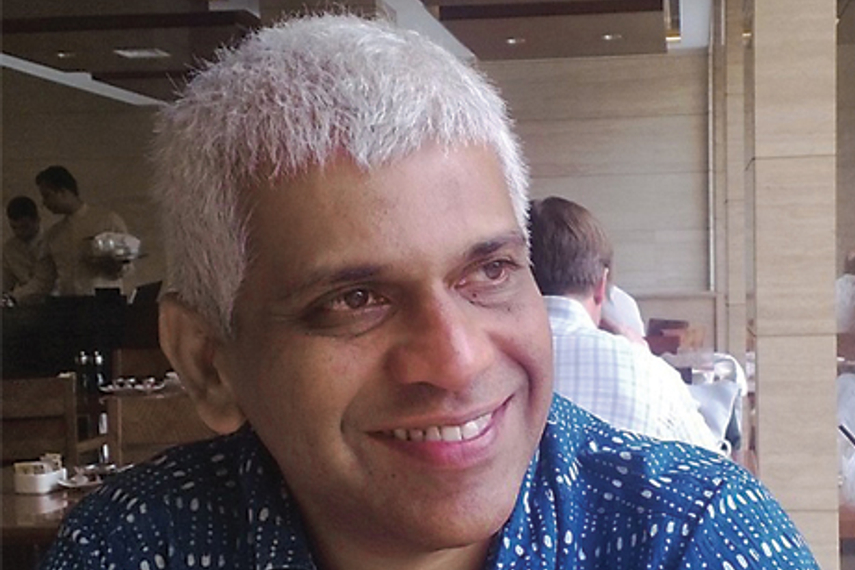
How did you get into advertising?
I started painting since the age of five or six and my family was very supportive as well. However, they asked me to do a Bachelor’s degree. So I came to Loyola in Chennai from Kerala and sort of stumbled through my BA Economics. At Loyola, one of my paintings got recognised at a national level exhibition in Delhi. And I was the only non-professional artist or someone not from an art background to have a painting out there. So the college got very excited. They said, ‘If you are doing all this why you don’t start an art club?’ We started one successfully and our first art club exhibition fared pretty well.
In one of those exhibitions, the then Collector of Chennai saw our work and told us to start a course. I went and met the principal, who told me that we already had a lot on our plate. Meanwhile, the Collector met with the principal and I was also called in. The principal agreed to start the course on an experimental basis. He said he would provide the required financial support but asked me to run the course. The principal provided us a little space at the back of the building which I had to clean up with the support of a couple of my friends. We ran an ad on the newspaper. We had a visiting faculty from NID and many others because it was a course run by the students. Everyone was extremely supportive for the first batch of Visual Communication. Anybody was willing to open the door for us. The whole idea was to run Visual Communication as a proper, sort of professional degree. Unfortunately, somewhere down the line, it became like ‘If you are not doing BA History, you can do BA Visual Communication’. That was not what we wanted when we started the course in 1984.
That’s how I got into designing. Then I did a month’s internship at HTA (now JWT). From there, I joined RK Swamy. I was there for a year and a half year as junior visualiser. From there, I joined Goldwire (then a breakaway from Lintas).
Can you share your experience with R K Swamy and Goldwire?
RK Swamy is an agency which taught me a lot about business. It taught me how to get an ad across. Overall, it was a very good learning experience.
From there, I went on to Goldwire which was largely about one client. MRF was a big spender and it was all about getting the art work done on time. I picked up many printing techniques when I was working for Goldwire.
After Goldwire, I was heading Grey in the creative department as an art person. That’s where the more creative angle of life came in. I used to handle Arun Ice Cream. My CAG (Communication Arts Guild) and other awards came for work on that brand at that point of time. I got my recognition in Grey from three or four ad campaigns that won a few awards in Mumbai. I also worked with FCB Ulka (now Draftfcb-Ulka) with Ambi Parameswaran. Both these experiences helped in my career to a great extent.
So Rubecon happened immediately after your stints with Grey and Ulka…
We actually had no idea of starting an agency. We were bunch of guys who quit because we got bored. We had a little bit of money and we told ourselves that we had been overworked and wanted to have some fun, watch all the movies in town and not do anything at all. That is when the restaurant manager at Taj asked us to do four or five posters for Taj Coromandel. It all started from there. One thing led to another. We still tend to work better this way - we take up a project and then take up a second project. I find it better this way because I think if you are a network agency, you have great amount of data to use in creative pitches. We (on the other hand) have to learn alongside clients. Otherwise, there is no way we can learn a category overnight or in two weeks. Many of our clients started off with one tag, one poster, one pack design. It all started off like that.
Would you like to talk about your initial days at Rubecon?
When we started off, I used to stay in a bachelor accommodation. Two or three of us would get together in the morning. We used to have folding chairs and tables. The bed used to be pushed on to one corner and the room was converted into a studio in the morning. In the night, it used to revert back to being a bedroom. It went on like this for almost two years. It was great fun.
First of all, we were trying to run an agency that was not at all connected to media. Before the whole split happened between media and creative, we were already going down to that path. There was a case pending against us as we released a campaign through another agency - it was illegal then. I was very certain about staying away, though people used to ask me why we are not doing media - because money, they said, was in the media. I used to tell them that creative is what I wanted to do.
One or two years later, the whole trend of divorcing the creative and media happened. We were already down that path.
It was a different zone at that point. You didn’t have modern day design software. The art work used to be cut and paste. Television was a very rare occurrence. It was largely about print.
Can you name one campaign which gave Rubecon a real breakthrough?
We did one hoarding for Taj. During the painting of that hoarding, we directed the workers on the colours needed to be used and the finer details. They produced a fantastic looking hoarding. All the people driving past the hoarding were enquiring about it. We got a call from Colorplus after they had seen the hoarding. That’s how we got that client. With most of our clients, one piece of work led to another.
How has Rubecon grown since then?
One thing I would like to tell people about Rubecon is that for us it is not about the turnover, it’s not about capitalised billings. Of course we need to make decent living - I’m not saying no. But it was never about opening offices all over the country. We have had umpteen number of tie up and buyout offers and I have turned all of them down.
I think there are two kinds of business. One is the kind of business which needs to scale up, which needs volumes. The other kind is business is one which largely works in a locality and strives to do international quality work in that locality. I’ve been saying this from early 90’s. Today that’s what is happening.
There are a lot of mid-sized, small creative shops doing some fantastic work. I’m not saying big agencies are not doing great work. All I’m saying is that there are plenty of smaller shops like ours which are doing fabulous work. I would say we sort of pioneered this concept.
I’m also great believer in looking at talent from your own city. I’m constantly into loggerheads with lot of people on this particular issue, because I believe you can train people locally. You don’t have to go to some international schools; you can get them to do some really fantastic work if you decide to work with the local talent here. Sometimes, people say there is no talent in Chennai. I’m a great believer in Chennai and believe that it has got plenty of talent. You just have to know how to handle them. A large pool of my talent has grown in Chennai.
There is a lot of talk about the talent crunch in Chennai and a lot of big clients are looking elsewhere for their communication. Has this trend affected smaller shops like Rubecon?
I still have a lot of clients who thankfully believe in the same values of Chennai that I do. I think it was a trend started by a couple of people which sort of caught up and everybody was saying Chennai has got no talent. I think that is a completely wrong perception. Somewhere, some clients have let themselves and the (ad) industry down. Of course some clients have moved on, but I think there is still plenty of work to be done. Maybe it affected two or three big agencies. It certainly didn’t affect me.
Maybe it doesn’t affect the independent shops as much. We don’t have a capitalised billing structure and I don’t have to report to a boss in Bangalore or Mumbai. Chennai works to a different beat. It always works to a different beat.
I have seen this trend happening thrice before; twice in the 90’s. I think it’s cyclical. The wheel will turn. And somebody is going to turn that wheel.
You say Rubecon is not an advertising agency. So, how do you define Rubecon?
We have done movie posters. Agencies won’t even take up that work. I take it up because it excites me. We have done TVCs. I think we were the last guys who ran a campaign for Colourplus based on cheeky lines when everybody was saying that English was dead. We launched Spinz for CavinKare. It was a national launch in different languages. We’ve done a mix of everything. That mix what I like to do.
If somebody comes to me with a project that is really interesting, Rubecon has the flexibility to take it up. Some other agencies may not. They might ask you what’s in it for them in terms of revenue and insist on working for a longer term.
Actually, I sometimes wonder if we are qualified to be called an agency. We have creative, client servicing and account planning, but we do a lot of work that other agencies may not do.
What would you say to people who say there is not much work in Chennai, and to clients who are moving out of Chennai because there is dearth of talent?
I would ask them to stay away from making such broad generalisations as it is harming the industry. I think too many broad generalisations have been made by too many industry leaders.
There are a lot of clients in Chennai who are doing great work, be it their advertising or their product offerings. And they are doing fairly well.

Arun Ice Cream

Fruit Shop
Taj Coromandal
Star Health Insurance
Colorplus
Price Jewwllery
Raaga
ibaco Ice Cream
ecstasy
The Flying Elephant














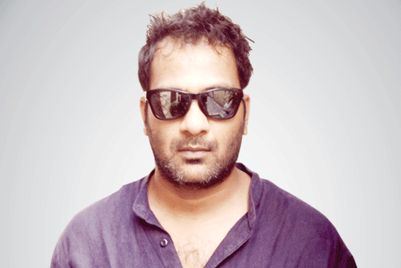
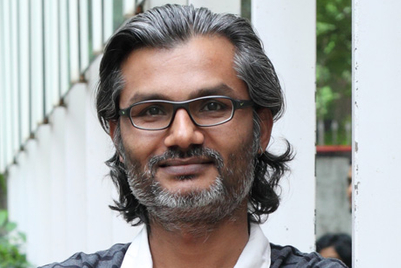
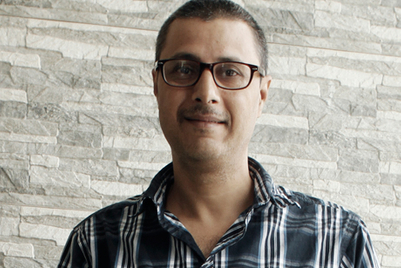
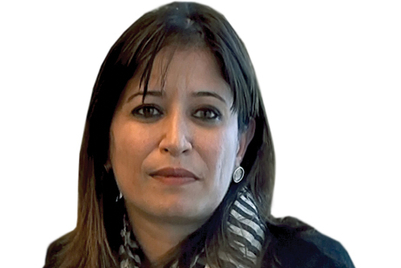
.jpeg&h=268&w=401&q=100&v=20250320&c=1)
.png&h=268&w=401&q=100&v=20250320&c=1)
.png&h=268&w=401&q=100&v=20250320&c=1)

